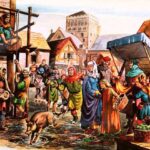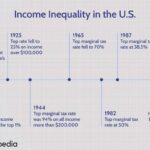Feudalism was a dominant political system in medieval Europe, shaping the socio-political landscape for centuries. This system, characterized by the exchange of land for military service and loyalty, played a crucial role in the organization of power, governance, and society during the Middle Ages.

Credit: www.facebook.com
The Feudal Structure
Feudalism was marked by a complex hierarchical structure, with the monarch at the top and various tiers of vassals, lords, and peasants below. At its core, feudalism revolved around the principle of land ownership and the granting of fiefs, or estates, in exchange for allegiance and military support.
| Level | Responsibilities |
|---|---|
| Monarch | Granted land to vassals in exchange for military service and loyalty. |
| Vassals | Pledged allegiance to the monarch and provided military support. |
| Lords | Granted land to vassals in return for military aid and other services. |
| Peasants | Worked the land in exchange for protection and use of the lord’s land. |
Each level of the feudal hierarchy had specific rights and obligations, creating a complex web of relationships and dependencies within medieval society.

Credit: fastercapital.com
Key Features of Feudalism
Feudalism was characterized by several key features that defined its functioning and influence:
- Fief and Fealty: The granting of land (fief) by a lord to a vassal in exchange for loyalty and military service (fealty).
- Manorialism: The economic system that developed within feudalism, focusing on the manor as the center of agricultural production and the social structure of serfdom.
- Decentralized Authority: Governance was localized, with power dispersed across various lords and vassals rather than centralized with the monarch.
- Mutual Obligations: The feudal contract established reciprocal obligations between lords and vassals, forming the basis of the feudal relationship.
- Feudal Hierarchy: The clear delineation of social classes and power structures, with the monarch at the apex and peasants at the bottom of the hierarchy.
Impact of Feudalism
Feudalism left a profound impact on medieval society, shaping political, economic, and social dynamics in Europe. Some of the significant impacts include:
- Political Fragmentation: Feudalism contributed to the decentralization of political power, leading to fragmented authority and localized governance.
- Social Stratification: The feudal hierarchy entrenched social divisions, creating a rigid class structure based on land ownership and vassalage.
- Economic Structure: The manorial system under feudalism influenced agricultural production, labor relations, and the overall economic landscape of medieval Europe.
- Military Culture: Feudalism fostered a culture of warfare and chivalry, where military service and knightly virtues held significant prominence.
- Loyalty and Oath-Binding: The feudal contract emphasized loyalty, oaths, and mutual obligations as foundational elements of the feudal order.
Decline of Feudalism
While feudalism remained dominant during the medieval period, it eventually faced challenges and underwent a gradual decline. Several factors contributed to the decline of feudalism:
- Centralization of Power: The emergence of strong centralized monarchies reduced the influence of feudal lords and contributed to the decline of feudal fragmentation.
- Shifts in Economic Dynamics: Transformations in trade, commerce, and the rise of urban centers led to changes in the economic structure, impacting the traditional feudal system.
- Social and Political Upheavals: Events such as the Black Death, peasant revolts, and power struggles within the nobility disrupted the stability of the feudal order.
- Technological Advancements: Innovations in warfare and agriculture altered the dynamics of power and labor, influencing the traditional feudal arrangements.
- Rise of Nation-States: The emergence of nation-states and the consolidation of royal authority further weakened the foundations of feudalism.
In Conclusion
Feudalism stands as a defining feature of medieval political and social history, shaping the structures and relationships that characterized the era. Its influence reverberated across Europe, leaving an indelible mark on the trajectory of political evolution and social organization. Understanding the complexities of feudalism provides valuable insights into the dynamics of power, governance, and society during this pivotal period in history.
Frequently Asked Questions On Unraveling Feudalism: Exploring The Power Dynamics Of Medieval Political History
What Was The Role Of Feudalism In Medieval Political History?
Feudalism played a crucial role in medieval political history by establishing a hierarchical social structure and distributing land and power among lords and vassals.
How Did Feudalism Shape The Medieval Society?
Feudalism shaped medieval society by providing a system of rights and obligations, influencing the economic structure, and defining social relationships based on land ownership.
What Were The Benefits Of Feudalism For The Nobility?
The nobility benefited from feudalism through the acquisition of land, political power, and privileges that secured their social status and economic prosperity.
How Did Peasants Contribute To The Feudal System?
Peasants contributed to the feudal system by providing labor and agricultural production in exchange for protection and the right to cultivate land granted by the lord.
Guest Author Sakhawat-Shuvo wrote and edited this Article based on his best knowledge and understanding. These opinions and remarks are not endorsed or guaranteed by epichistoria.com or EpicHistoria. The Epic Historia does not guarantee this article’s content. Readers should verify and use their judgment before trusting the content. Also, the Images used in this Article are the copyright of their Respective Owners. Please use our Comment Box or Contact Us form to report this content. This information is not accountable for losses, injuries, or damages.

